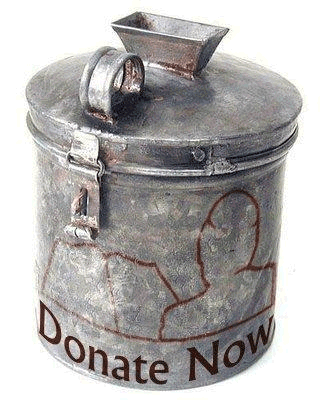Bechoros Chart #2
Chart for Bechoros Daf 13a
THE DIFFERENCES BETWEEN THE TIMES FOR PERFORMING THE MITZVOS OF PIDYON HA'BEN AND PIDYON PETER CHAMOR (1)
| (A) RAV NACHMAN (1) |
(B) RAV SHESHES |
||
| 1a | PIDYON HA'BEN BEFORE 30 DAYS | The Pidyon takes effect after 30 days have passed | The Pidyon takes effect (but it is not clear whether it takes effect immediately, or after 30 days) |
| 1b | PIDYON HA'BEN AFTER 30 DAYS | Mitzvah to redeem it | Mitzvah to redeem it |
| 2a | PIDYON PETER CHAMOR BEFORE 30 DAYS | The Pidyon takes effect b'Di'eved | Mitzvah to redeem it |
| 2b | PIDYON PETER CHAMOR AFTER 30 DAYS | Mitzvah to redeem it | He has transgressed the Mitzvah |
Bechoros Chart #3
Chart for Bechoros Daf 13a
ONE WHO BUYS PIECES OF SILVER FROM A NOCHRI AND THEN FINDS IMAGES ON AN IDOL ON THEM (2)
| (A) HE DID NOT GIVE MONEY, AND DID MESHICHAH -- HE IS NOT "KONEH" AND HE MAY RETURN THE SILVER |
(B) HE GAVE MONEY, AND DID MESHICHAH -- HE IS "KONEH" AND HE MAY NOT RETURN THE SILVER, BUT MUST THROW IT INTO THE SEA |
||
| 1 | ABAYE: MESHICHAH IS KONEH (3) |
Mekach Ta'us | Since he paid money, he should have examined the merchandise first. Since he did not examine the merchandise, he accepted it as is. |
| 2 | RAVA: MESHICHAH IS KONEH (3) |
Mekach Ta'us | Mekach Ta'us; however, the Rabanan decreed that he not return the silver to the Nochri and receive his money back, because doing so appears as though he is selling objects of idolatry. |
| 3 | RAV ASHI: KESEF IS KONEH |
Only Kesef is Koneh, and not Meshichah | Since he paid money, he is Koneh (4) |
| 4 | RAVINA: MESHICHAH IS KONEH (3) |
He did not perform Meshichah at all (5) | Since he did Meshichah, he is Koneh (6) |
==========
FOOTNOTES:
==========
(1) Rav Nachman (end of 12b) and Rav Sheshes (beginning of 13a) argue about how to reconcile the two contradictory Beraisos. One Beraisa that states that the Mitzvah of Pidyon for a Peter Chamor must be done immediately (when the donkey is born), in contrast to the Mitzvah of Pidyon ha'Ben which is done when the child is thirty days old. A second Beraisa, however, states that Pidyon Peter Chamor cannot be done until after thirty days have passed.
(2) The Beraisa teaches that one who buys pieces of silver from a Nochri and finds images of idols on them may return them if he did not yet give money for them, even though he did Meshichah with them. However, if he gave money for them and did Meshichah with them, then the Kinyan is valid and he may not return them; he must throw the silver into the sea. The Beraisa implies that giving money alone, or Meshichah alone, does not suffice to effect a Kinyan. What is the difference between the Reisha and the Seifa, such that in the Reisha the Jew is not Koneh the silver, and in the Seifa he is Koneh the silver?
(3) Meshichah is Koneh in this case, even though, normally, the Kinyan of Meshichah does not work when acquiring an object from a Nochri. In this case, though, the non-Jew explicitly stipulated that he wants to consummate the purchase according to Jewish law.
(4) And "u'Mashach" is Lav Davka.
(5) See Insights here, quoting Tosfos on 14a, DH v'Reisha.
(6) And the giving of money, according to Ravina, is Lav Davka.




